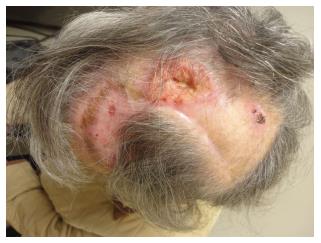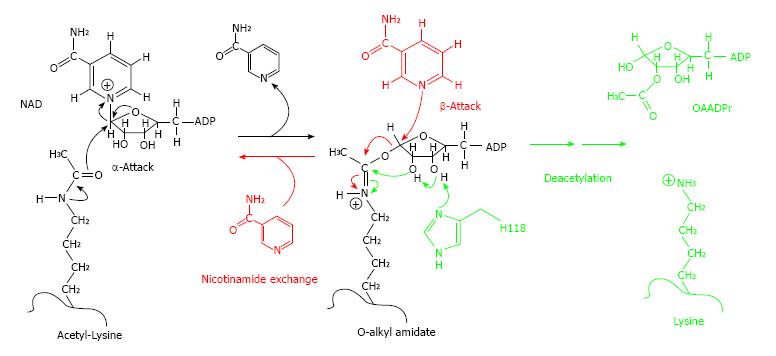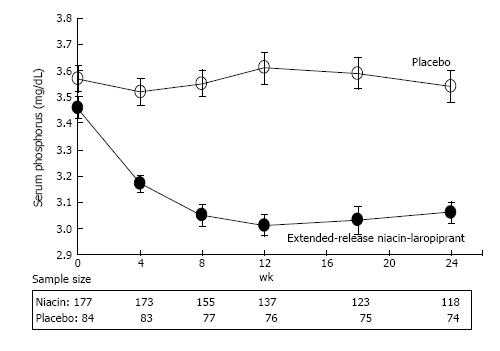Copyright
©The Author(s) 2016.
World J Transplant. Dec 24, 2016; 6(4): 658-664
Published online Dec 24, 2016. doi: 10.5500/wjt.v6.i4.658
Published online Dec 24, 2016. doi: 10.5500/wjt.v6.i4.658
Figure 1 The unique aggressiveness of squamous cell carcinoma in kidney transplant recipients.
Deeply invasive, recurrent, poorly differentiated and ulcerated squamous cell carcinoma in a 73-year-old female kidney transplant recipient with background alopecia from prior radiation therapy for this squamous cell carcinoma.
Figure 2 Nicotinamide-SIRT binding.
At high concentrations, NAM can bind to SIRT when it contains the O-alkyl-amidate intermediate, resulting in “NAM exchange”, reforming NAD+ and acetyl-lysine, and decreasing deacetylation activity - a process unique to NAM, not NA. Reproduced from[18]. NA: Nicotinic acid; NAM: Nicotinamide.
Figure 3 Phosphorus-lowering effect of nicotinic acid in chronic kidney disease.
Mean serum phosphorus concentrations in dyslipidemic patients with stage 3 chronic kidney disease receiving extended release niacin-laropiprant, or placebo. Error bars are standard errors. Reproduced from Ref. [24].
- Citation: Bostom AG, Merhi B, Walker J, Robinson-Bostom L. More than skin deep? Potential nicotinamide treatment applications in chronic kidney transplant recipients. World J Transplant 2016; 6(4): 658-664
- URL: https://www.wjgnet.com/2220-3230/full/v6/i4/658.htm
- DOI: https://dx.doi.org/10.5500/wjt.v6.i4.658















